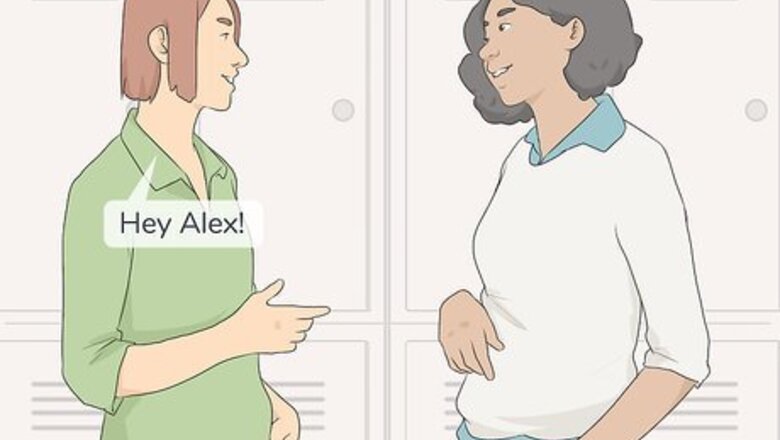
views
Using Informal Greetings
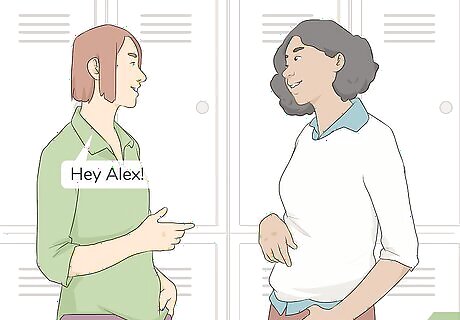
Say “Hi” or “Hey” to greet someone quickly. If you’re having a casual conversation with someone you don’t know well, use “Hi” since it’s a little more formal. You can use “Hey” if you’re familiar with the person. After greeting them, transition right into a regular conversation so you have more time to chat. If you don’t have time for a full conversation, still greet them so it doesn’t seem like you’re impolite or ignoring them. For example, you could say, “Hey Alex!” or “Hi Derek.” You can also try using the word “howdy,” though it may sound more quaint or slangy.
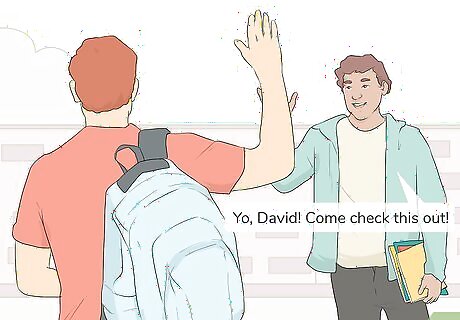
Try saying “Yo” to close friends for a very casual greeting. You can either keep your greeting short or hold the O-sound for a longer time to make it more prominent. Try saying “Yo” followed by the person’s name to grab their attention if you want them to listen to you. For example, you could say, “Yo, David! Come check this out!” If you’re very familiar with the person, you can replace saying their name with a different term, such as “man,” “dude,” or “girl.”Variation: Avoid using “Yo” with parents, teachers, or professionals since it may come across as disrespectful.
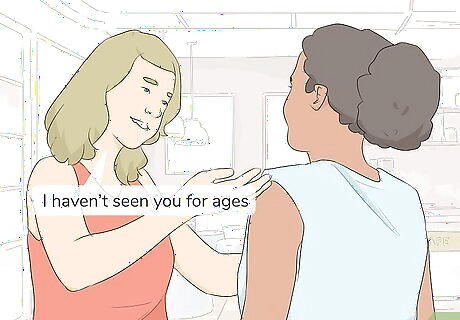
Say “Long time, no see” if it’s been a while since you last saw the person. Add the phrase to the end of your greeting to let them know you’re happy to run into them again. Mention how long it's been since your last meeting so you can catch up during your conversation. For example, you could say, “Hey dude, long time, no see! It’s been months.” You can also try phrases like, “It’s been too long,” “I haven’t seen you for ages,” or, “Where have you been hiding all this time?”

Ask “What’s up?” or “How’s it going?” to keep the conversation going. If you have time to catch up or talk to the person, ask them how they’re doing. The other person may respond by saying “Not much” or they may respond with more detail. If they want to continue the conversation, they will usually ask you the same thing so you can answer as well. Actively listen to them so you’re able to respond thoughtfully. For example, a full greeting may sound like, “Hey Sam! Long time, no see. How’s it going with you?” You can also try using the phrases, “What’s good?” or “How’s it hanging?” since they have the same meaning. Consider any recent events in their life that you may know about, such as a family trip, and bring that into the greeting. For example, you may say, “Hey, Anna, great to see you! How was your trip to the Rocky Mountains?”
Practicing Formal Greetings

Use “Hello” followed by the person’s name for a quick and short greeting. If you don’t know the person very well or if they’re your superior, use their title and last name. For someone you’re more familiar with, you may use their first name instead. Use a polite and friendly tone while you greet them to make them feel welcome. For example, you may say, “Hello, Mr. Johnson,” or, “Hello, Julie.”Variation: If you haven’t met the person before, use “sir” or “madam” in place of their name to sound more formal.

Say “Good morning/afternoon/evening” depending on the time of day. If you meet the person before noon, opt to say “Good morning.” Between noon and about 5–6 PM, use “Good afternoon." If you’re talking to the person after 6 PM, say “Good evening” to them to sound polite. For example, you could say, “Good morning, Mrs. Smith,” or, “Good afternoon, Susan.” If you use this greeting, you don’t have to say “Hello” since it can sound redundant. Avoid saying “Good night” since that’s usually something you would say before you leave.
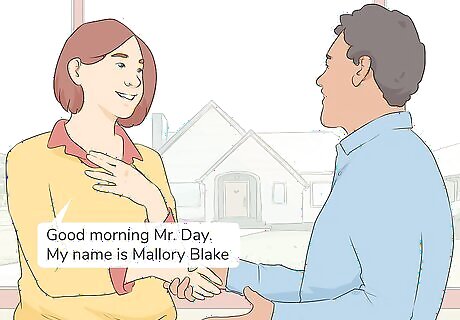
Introduce yourself after greeting them if the other person doesn’t know you. Greet the other person as you normally would before your introduction. Then, introduce yourself and mention your full name to the person. Speak clearly so they’re able to hear your name without getting confused. For example, you could say, “Hello, my name is Jake Smith,” or, “Good evening Miss Day. My name is Mallory Blake.” If you’re meeting a superior at work, you can also mention your job title in your greeting. For example, you may say, “Hello, I’m Ryan Jones, one of the salesmen here.”

Add “Nice to meet you” if you’ve never met the other person. After your regular greeting and introduction, be polite and mention that you’re happy to meet them. Smile and make eye contact with the person so you seem genuine during your greeting. Maintain a polite and professional tone to help you sound authentic. For example, you could say, “Good afternoon, Mr. James. My name is Daniel. It’s nice to meet you.” If you want to sound more formal or professional, you can say the phrase, “It’s a pleasure to meet you.” In case you have met the person before, you can instead say, “It’s nice to see you again.” If the person doesn’t say their name or you weren’t introduced to them by someone else, you can also say, “I’m sorry, I didn’t catch your name. Could you repeat it for me?”

Ask “How are you doing?” if you want to continue the conversation. If the person seems interested in talking to you, find out how their day is going. The other person may give a short answer before moving on to a different subject, or they may continue making small talk. Be sure you respond to any questions or comments the other person has to carry on the conversation so it doesn’t seem one-sided. You can also try using the phrase “How do you do?” to sound more formal. If you’re greeting someone in a business setting, you may say something like, “How can I help you today?”
Incorporating Body Language
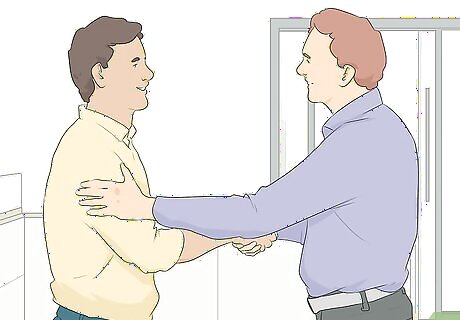
Make eye contact and smile at the person you’re greeting. Try to make eye contact as soon as you meet or are introduced to the other person so you can connect with them easier. Wait a few seconds after making eye contact before smiling so it seems more genuine. Throughout the conversation, maintain eye contact as much as possible so you stay involved without getting distracted. In some cultures, maintaining eye contact may be considered rude. Be sure to check the local customs in your area to determine what’s polite. It’s okay and often preferred in most English-speaking cultures to maintain eye contact.
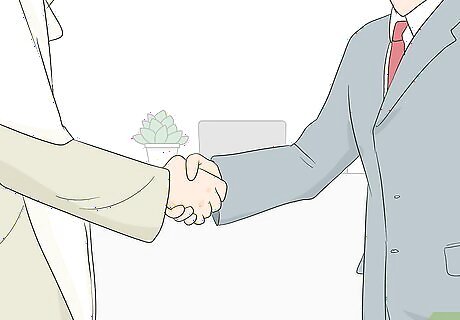
Offer a firm handshake while you’re greeting the other person. Extend your right hand when you greet or meet someone so the other person can shake it. Grip their hand firmly, but not so tight that it hurts them or makes them feel uncomfortable. Shake their hand up and down for about 2–3 seconds before letting go. Handshakes may not be acceptable greetings in some cultures, so check what’s appropriate in your area before shaking someone’s hand.Tip: Avoid shaking with your left hand since many people are right-hand dominant and they may feel awkward using their left hand.

Wave at the person to greet them from a distance. Raise your hand up near your head and shake it from side to side to say hello to someone. You may also try quickly closing your hand into a fist and opening it back up again to wave. If you need to get someone’s attention from a distance or show that you’re excited to see someone, try lifting your hand far above your head and waving your entire arm. Waving is great for you to greet someone if you don’t have time to talk or if you’re just passing by.

Try a fist bump for a casual gesture. Make your hand into a fist and extend your arm toward the other person. Lightly tap the front of the other person’s fist with your fist before putting your arm back down. Be careful not to hit their hand too hard, or else you may them. Fist bumps can be more hygienic than handshakes since germs are often spread through the palms.

Give the other person a hug if you know them well. Spread your arms out as you approach the other person to see if they do the same. If they also go in for a hug, wrap your arms around their body and hug them. After a few seconds, let go and take a step or two back from the person so you can talk to them. Avoid holding the hug for too long, or else you could make the other person feel uncomfortable. Don’t try to hug someone if they don’t seem comfortable with it.




















Comments
0 comment